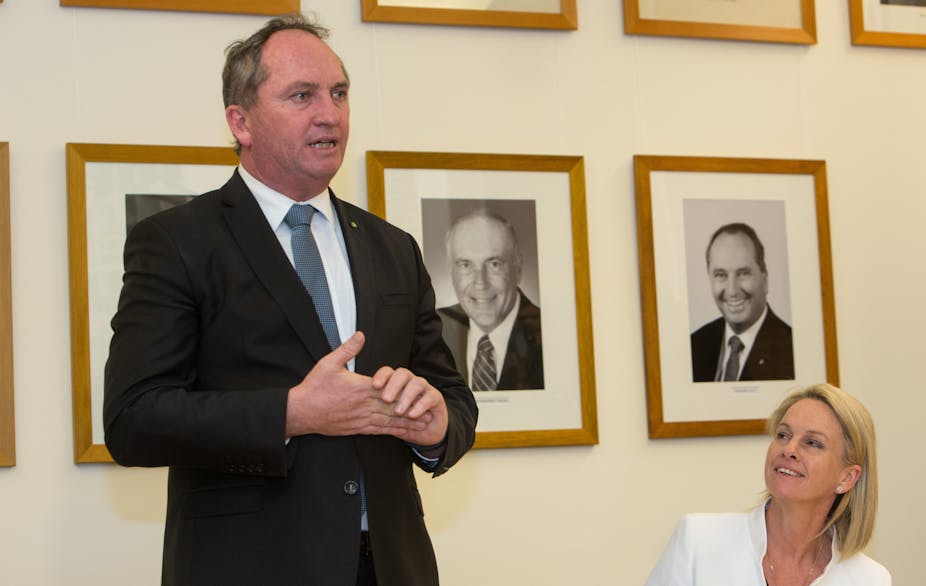The timing of Barnaby Joyce’s talks with Malcolm Turnbull to discuss the new Coalition ministry was up in the air on Tuesday night after the Nationals leader suddenly returned to his Tamworth home to nurse an injured knee.
Joyce was butted by one of his dorpers while handling sheep in a race at his property on Monday. He was in acute pain on Tuesday when he was in Canberra for the Nationals post-election meeting, and was unusually tetchy with journalists.
The Nationals are entitled to extra ministerial representation, reflecting their bigger proportion of the Coalition. Their numbers have increased from 21 to 22. “The ministry is ruthlessly determined by the numbers,” Joyce said after the party meeting, in an echo of John Howard’s words on the subject in 2006.
Joyce and his deputy Fiona Nash had been expected to meet Turnbull in Canberra on Wednesday. On Tuesday night it was unclear whether they would talk by telephone or whether Joyce’s injury would be enough improved to allow him to return from Tamworth to Sydney on Wednesday.
Earlier Joyce told the Nationals there was no huge rush to finalise the agreement because the governor-general, Sir Peter Cosgrove, was currently overseas and the swearing-in of the new ministry would not take place until he returned.
In an upbeat message to an enthusiastic party meeting Joyce made clear his ambitions to grow the Nationals, saying it was “important that we understand that this is not as good as it gets”.
This result was “merely a stepping stone. We want to have the ambition to continue to grow the party and to look for where the next targets will be.
"We believe we should grow the party not because of some parochial interest, we believe a bigger number is a better number, we believe the party represents best outcomes for people in regional areas because we have undivided focus on them.”

